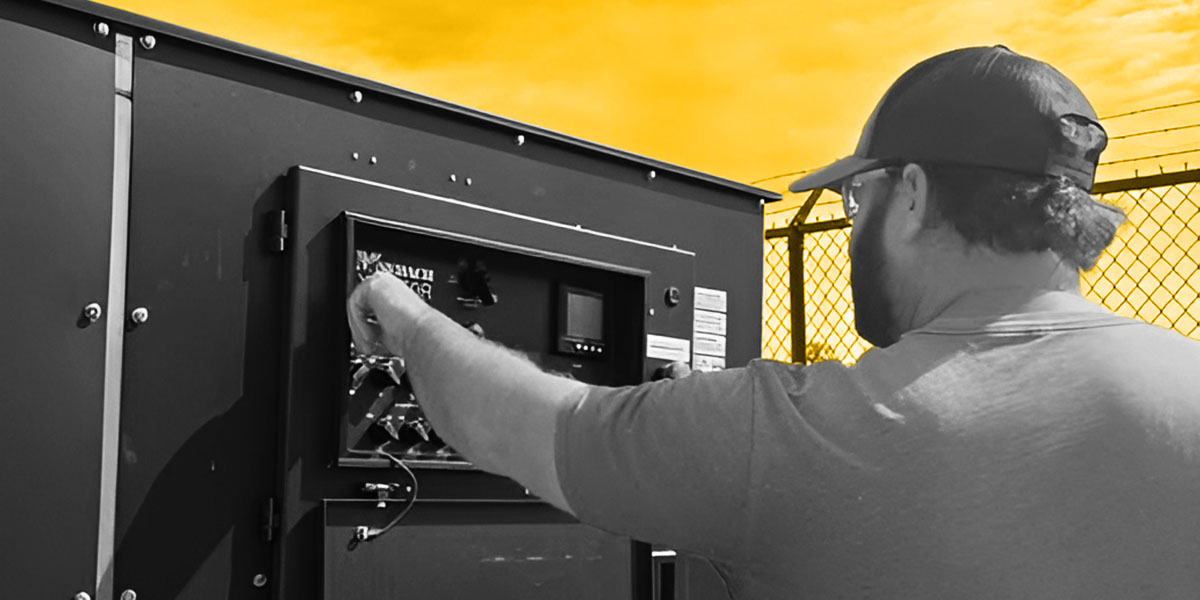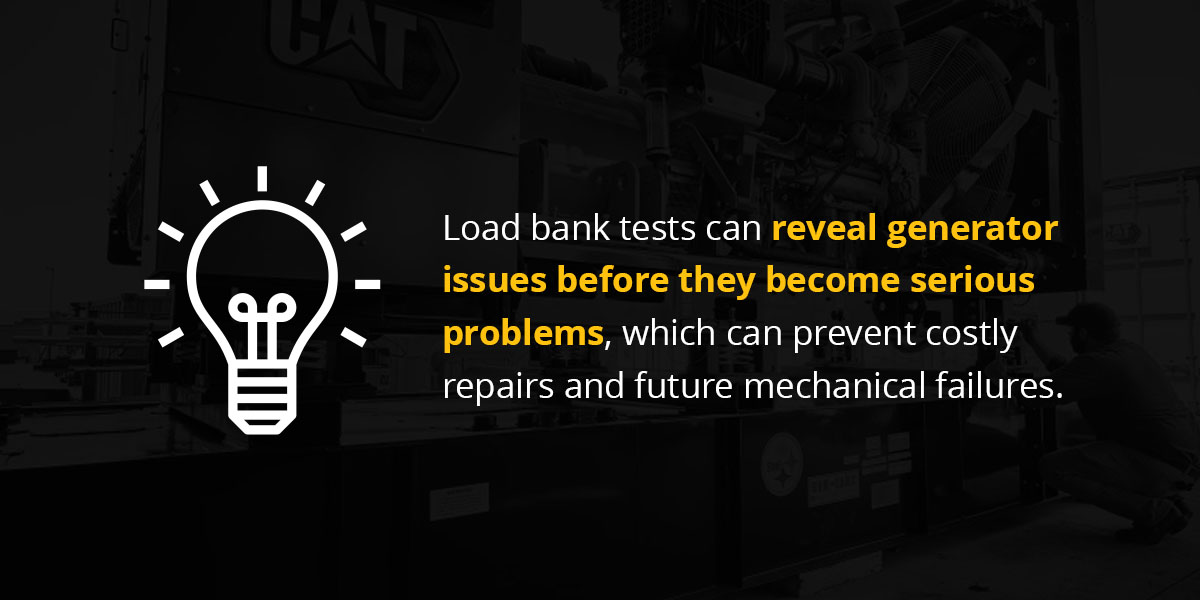

When an outage strikes, you rely on your standby generator to keep your operations running until you can solve the problem. This is especially true for critical organizations such as hospitals, where prolonged outages are literally a matter of life and death.
Load bank testing confirms that your generator can sustain operations at full load for long periods, helping you prepare for emergency situations when they arise. Regular load bank testing is also key to your preventive maintenance regimen because it promotes generator health and helps you identify mechanical issues that could escalate.
In this post, we’ll explain what load bank testing is and why it’s so vital for generator health and maintenance. We’ll also discuss the steps technicians follow when conducting load bank testing and the importance of hiring the right technician for the job.
Load bank testing is an essential component of any preventive generator maintenance routine. It consists of a test that applies an artificial load to a generator to verify that it can sustain operations at full load for a set period.
Wet stacking typically occurs in generators that are used only in emergencies, or that typically operate under light loads. Because the generator does not reach a high enough operating temperature, unburned fuel and debris build up in the exhaust system. This buildup can cause serious internal damage that impacts generator performance. It can also become a fire hazard.
A generator load test raises a generator’s operating temperature, which burns off excess fuel buildup and tests the system’s ability to handle high loads.
It’s important to note that while many generators run automatic exercising, this function is different from load bank testing. Unlike load bank tests, automatic exercise is usually conducted under a light load, or without applying a load at all.
A load bank is a device that applies an external electrical load to a generator to test its performance capabilities. There are four primary types of load banks:
When you conduct a load bank test, you want to make sure you use the right type for your generator set and application. They also come in various configurations to suit multiple different generator types. Consult a load bank expert to find out which configuration best fits your application.
Depending on how often you need to test your generator set, you could either purchase a load bank and keep it onsite or rent one as needed.
Load bank testing is beneficial for a variety of reasons, including:

Because load bank testing is a highly technical procedure, you’ll need a qualified and experienced technician. Your internal maintenance staff might lack the proper training or experience to safely conduct the test, so you may want to consider hiring a certified operator from a reliable power systems provider.
Before conducting a generator load bank test, the technician should take the proper precautions to ensure safety. Technicians should wear personal protective equipment (PPE) such as eye protection, hearing protection, gloves, steel-toed boots, and a high-visibility vest. They should also check all fluid levels, including fuel, oil, and coolant, to ensure the generator is ready to handle a full load.
The steps for a load bank test include:
Monitor the generator throughout the testing period to ensure everything goes as planned. If at any time you hear or see signs of mechanical issues, stop the test. Wait to test again until the issue has been diagnosed and resolved.
Additionally, be sure to follow lockout/tagout procedures as required by the NFPA and the Occupational Safety and Health Administration (OSHA) to prevent fire hazards or personal injury.
The load bank test report should include the following information:
Tracking this information can help you monitor generator condition over time, which is essential for ensuring your facility is prepared for any emergency. It can also help you provide information to your technician during preventive maintenance intervals.
Here are some of the most common questions our customers have about load bank testing on commercial standby generators.
The type of facility you operate in and the nature of your operations directly impact how often you should perform load bank testing on your generator. While the NFPA recommends an annual test lasting between 1.5 and 4 hours for all facilities, critical operations such as hospitals, data centers, and emergency response centers should test more frequently to reduce risk as much as possible.
Our knowledgeable experts can help you decide the right testing interval for your facility.
Wet stacking is when unburnt fuel, carbon particles, and moisture build up in the exhaust system, and load bank testing prevents it by placing the generator under normal operating conditions.
Wet stacking can happen when you only run your generator below its designed operating temperature for long periods. Because it never reaches its optimal temperature, the diesel fuel inside burns incompletely and accumulates as a thick, dark liquid. You can often tell when wet stacking has occurred if you see this liquid dripping from the generator’s exhaust.
Because load bank testing involves running the generator at full load for an hour or longer, it enables the fuel to completely combust. Thus, you can have peace of mind knowing your generator is operating correctly with a clean exhaust system.
Load bank testing collects data that can be used to assess your generator’s health. Some examples of data points you might track include:
Tracking these data points over time can help you determine the proper preventive maintenance intervals for your generator, which is important for catching issues before they can escalate.
Regular load bank testing is a key part of ensuring compliance with industry standards like NFPA 110, which is the Standard for Emergency and Standby Power Systems. This standard defines comprehensive requirements for maintaining and preparing standby generators for real emergencies.
For example, NFPA 110 requires any Level One emergency power supply system (EPSS) to undergo a simulated outage test at least once every 36 months. Level Two systems, which are less critical, require less intensive testing. Following these guidelines helps facilities ensure their EPSSs are ready to go in the event of a real outage.
If you’re looking for efficient load bank testing services, Thompson Power Systems is here for you. We’ve been serving businesses throughout Alabama and the Florida Panhandle for more than 60 years, so we’ve got the knowledge and the experience necessary to help you keep your business running.
You can count on our team of skilled experts to perform effective preventive maintenance procedures on your power systems, including load bank testing for all your generator sets. We also have a wide range of new, used, and rental power equipment from Caterpillar to fit any industry and application.
Click here to find your nearest location, or give us a call at 205-782-0952 for more information about our products and services.